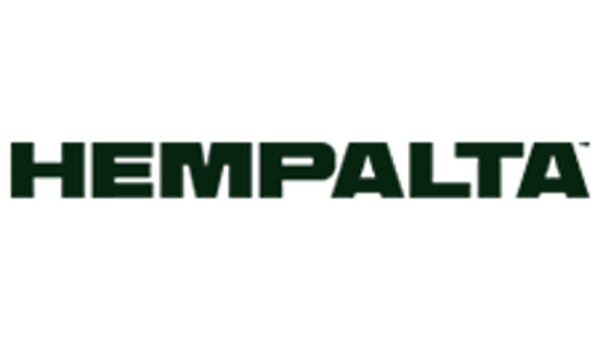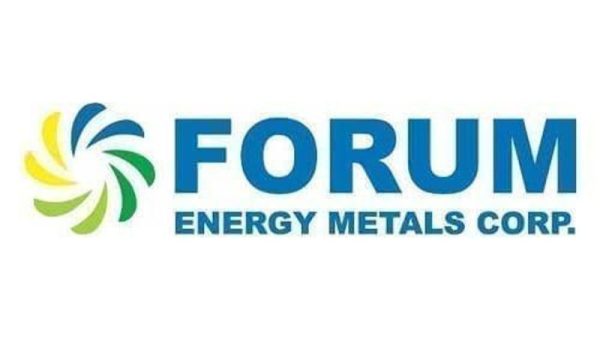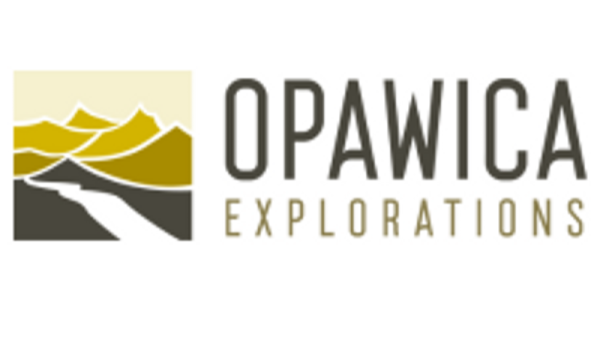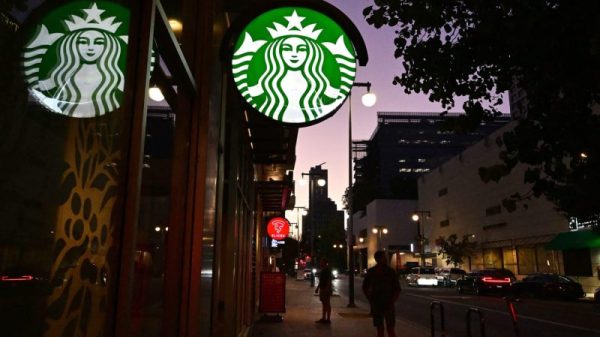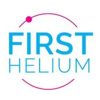Skyharbour Resources Ltd. (TSX-V: SYH ) (OTCQX: SYHBF ) (Frankfurt: SC1P ) (the ‘Company’) is pleased to announce results for its inaugural drilling program at its recently optioned 73,294 hectare Russell Lake Uranium Project, strategically located in the central core of the Eastern Athabasca Basin of northern Saskatchewan. Three phases of drilling were completed on the property this year with eight holes totalling 3,661.5 metres drilled at the Grayling Zone in Phase One, followed by Phase Two consisting of 2,730 metres in four holes at the Fox Trail target area, and returning to the Grayling Zone for Phase Three where an additional 3,203 metres was drilled in seven holes. Uranium mineralization was intersected in the majority of holes at the Grayling Zone over a strike length exceeding one kilometre. Drill hole RSL23-01 intersected one of the best ever drill results from the project, returning a 5.9 metre wide intercept of 0.151% U 3 O 8 at a depth of 338.4 metres, which includes 1.0 metres of 0.366% U 3 O 8 at 343.3 metres depth within a thrust wedge.
Russell Lake Project Location Map:
http://www.skyharbourltd.com/_resources/images/SKY-RussellLake-20220325-Inset.jpg
Jordan Trimble, President and CEO of Skyharbour Resources, stated: ‘We are very pleased with the inaugural drilling program at the Russell Lake Uranium Project. Numerous holes at the Grayling target area intersected significant zones of uranium mineralization including hole RSL23-01 which represents one of the best drill results at the project. Skyharbour has also expanded the extent of the known mineralized zones to over a kilometre at Grayling. Most of the drilling at the project historically has been widespread exploratory drilling and we are even more confident in the discovery potential and exploration upside at Russell Lake given this program along with the many highly prospective target areas hosting the geological ingredients necessary for high-grade uranium deposition. Planning is well underway for an upcoming, fully-funded winter drilling program with the project accessible all year round with road access, powerlines and an exploration camp.’
‘Skyharbour is also excited to have additional news flow and catalysts from its prospect generator business consisting of numerous partner companies advancing some of our other projects throughout the Athabasca Basin. Over the next year, the Company is anticipating continued drilling and exploration programs at its co-flagship projects of Russell and Moore, as well as at its partner-funded projects of Preston, East Preston, Mann Lake, Yurchison, South Falcon East, and South Falcon.’
Highlights:
Hole RSL23-01 intersected a 5.9 metre intercept of 0.151% U 3 O 8 beginning at 338.4 metres, including 1.0 metres of 0.366% U 3 O 8 at 343.3 metres. The mineralization begins near the base of a basement thrust wedge, and extends into the strongly clay altered sandstone and uppermost basement, and is accompanied by anomalous pathfinder geochemistry including As (≤1960 ppm) Ni (≤2760 ppm), and V (≤381 ppm). Hole RSL23-02 intersected 1.0 metre of uranium mineralization grading 0.224% U 3 O 8 at the unconformity, accompanied by major sandstone and basement faulting, significant clay alteration, and highly anomalous As (≤1110 ppm), Cu (≤427 ppm), Ni (≤2760 ppm), V (≤811 ppm) and Zn (≤602 ppm). Most of the holes drilled at the Grayling Zone that successfully reached their intended targets intersected uranium mineralization. The Grayling Zone and its attendant thrust wedge has now been confirmed over a strike length of 1,000 m. The uranium mineralization at the Grayling Zone is accompanied by significant faulting, strong clay alteration of the sandstone and basement graphitic pelitic gneisses, and highly anomalous pathfinder geochemistry, including anomalous B, Ni, Cu, Pb and As in addition to uranium. Drilling on the Fox Lake Trail conductors confirmed the presence of highly prospective graphitic pelitic gneiss packages in conjunction with prospective quartzite ridges and other favourable host lithologies. Both the sandstone and basement rocks in the Fox Trail area are frequently enriched in uranium and pathfinder elements including B, V, Ni, Co, Cu and As. Substantial portions of the Grayling and Fox Lake Trail target areas have yet to be systematically drill tested leaving robust discovery potential. There is also more than 35 kilometres of largely untested prospective conductors in areas of low magnetic intensity on the Property. Given the success of the inaugural drill program carried out by the Company at Russell Lake, a follow-up program is being planned. The program will consist of 4,000 m – 5,000 m of drilling and is slated to commence this upcoming winter.
2023 Diamond Drilling Program and Plans for Upcoming Drilling Program:
A total of 9,595 metres of drilling in nineteen holes was drilled in three phases during 2023. The first phase of drilling consisted of a total of 3,662 metres in eight completed holes at the Grayling Zone, while an additional four holes totaling 2,730 metres were drilled in the Fox Lake Trail Zone during the second phase. The recently completed third phase of drilling was comprised of 3,203 metres in seven holes on additional targets at the Grayling Zone.
Given the success of the inaugural drill program carried out by the Company at Russell Lake, a follow-up program is being planned. The fully-funded program will consist of 4,000 m – 5,000 m of drilling and is slated to commence this winter with additional details on the program forthcoming.
Phase One – Grayling Zone Drilling:
The first phase of Skyharbour’s inaugural drill program at Russell consisted of a total of 3,662 metres in eight holes at the Grayling Zone. The majority of the holes drilled at the Grayling Zone during this phase that successfully reached their intended targets intersected uranium mineralization and the Grayling Zone will be a primary target area at the project moving forward.
Grayling Target Area Drill Hole Locations:
https://www.skyharbourltd.com/_resources/images/Grayling-Zone-2023-Drill-Program.jpg
Hole RSL23-01 was drilled vertically as a follow-up to historical hole RL-00-22A which had returned 0.12% U 3 O 8 over 2.2 metres at 342.8 metres depth. The hole intersected pyritic, clay-enriched, and faulted sandstone beginning at 309.0 metres down to the first unconformity at 336.9 metres, directly overlying a faulted and locally mineralized cordierite-bearing pelitic gneiss down to 338.9 metres. This was followed by a mineralized sandstone wedge down to the second mineralized unconformity at 343.8 metres. Below this second unconformity intercept is altered and locally faulted cordierite-bearing graphitic pelitic gneiss to 450.3 metres (becoming more migmatitic below 437.5 metres), followed by Hudsonian migmatite and granite, before ending in Archean granite at 520.4 metres. Hole RSL23-01 returned a 5.9 metre intercept of 0.151% U 3 O 8 beginning at 338.4 metres depth, including 1.0 metres of 0.366% U 3 O 8 at 343.3 metres down hole, which represents one of the longest and most strongly mineralized drill intercepts at project to date. The mineralization is accompanied by anomalous As (≤2730 ppm As partial ), Cu (≤427 ppm Cu total ), Ni (≤2760 ppm Ni total ), V (≤811 ppm V total ) and Zn (≤602 ppm Zn total ).
Hole RSL23-02 was drilled at a dip of -85 o as a 20-metre step-out to the west of hole RSL23-01. The hole intersected a weak to moderately bleached sandstone column, becoming faulted, fractured, moderately to weakly desilicified, and variably clay altered below 298.1 metres. The alteration continues to the unconformity at 336.6 m, where a 30 cm mineralized zone was intersected in the basement rocks just below. A 10 m thick, locally clay-enriched and faulted cordierite-bearing graphitic pelitic gneiss unit was intersected immediately below the mineralization, with granite and biotite sericite schist in the remainder of the drill hole which ended at a total depth of 396.0 metres. The hole returned a 1.0 metre interval of uranium mineralization grading 0.224% U 3 O 8 from 336.1 to 337.1 m depth, which was accompanied by anomalous As (≤2300 ppm As partial ) and Ni (≤1900 ppm Ni total ).
Drill hole RSL23-03 was drilled at a -85 o dip 150 metres along strike to the northeast of the first two holes, targeting a 300 metre long, previously untested section of the Grayling thrust between holes RL-00-22A and RL-85-07. RSL23-03 intersected a moderately bleached, competent sandstone column down to the unconformity at 333.7 metres. The basement rocks consisted of anatectic pelitic gneiss down to 351.6 metres, where a 30-metre-thick shear/fault zone within pelitic gneiss and cordierite-bearing graphitic pelitic gneiss was intersected. Pegmatite and weakly graphitic cordierite-bearing pelitic gneiss were predominant in the remainder of the hole, which ended at 441.0 metres. The hole is interpreted to have intersected the targeted structure too far into the hanging wall of the fault, suggesting a slight bend in the Grayling structure in this area. The maximum uranium concentration intersected was 300 ppm U total within a granitic pegmatite and the basement rocks were anomalous in B (≤1510 ppm B total ), V (≤709 ppm V total ) and Ni (≤379 ppm Ni total ).
Hole RSL23-04 was drilled at a -80 o dip from the same set-up as RSL23-03 in order to test the basement wedge at the unconformity. The hole intersected structurally disrupted and moderately bleached sandstone at 322.7 metres down to the unconformity at 341.0 metres, followed by anatexite and pelitic gneiss, sheared cordierite-bearing pelitic gneisses and granites, and cordierite-rich graphitic pelitic gneiss and granitic pegmatite, before ending in Archean granite at 450.0 metres. The hole overshot the thrust wedge, but the basal sandstone was anomalous in As (≤29.6 ppm As), Cu (≤22.5 ppm Cu partial ), Ni (≤19.4 ppm Ni partial ), Pb (≤39.8 ppm Pb partial ), and U (≤9.4 ppm U partial ), while the basement rocks were locally anomalous in B (≤539 ppm B total ), V (≤555 ppm V total ), Ni (≤584 ppm Ni total ) and Cu (≤367 ppm Cu total ), similar to hole RSL23-03.
Hole RSL23-05 was drilled at a dip of -85 o approximately 20 metres north of historical hole RL-00-20, where two narrow zones of weak uranium mineralization were intersected near the unconformity. The hole intersected a moderately bleached sandstone column with local faulting and desilicification between 246.1 metres and the unconformity at 345.9 metres. The basement rocks consisted of paleoweathered anatectic pelitic gneiss and cordierite-bearing graphitic pelitic gneiss, before ending in Archean granitic gneisses at 453.1 m. The sandstone immediately above the unconformity was highly anomalous in U p (≤29.6 ppm U partial ) and B (≤1300 ppm B total ), while the basement rocks were locally enriched in in B (≤670 ppm) and Cu (≤1260 ppm Cu total ).
Hole RSL23-06 was drilled at an angle of -85 o to test the Grayling conductor in the northern part of the Grayling Zone area near historical hole RL-85-08. The hole intersected a nearly 20 metre thick thrust block, with an initial unconformity at 318.0 metres depth. Anatectic hematitized pelitic gneiss followed to 335.1 metres, with a graphitic clay gouge between 326.4 and 327.0 metres. Moderately mineralized fractures were encountered in the basal 40 cm of the basement wedge. A narrow hematized interval of sandstone was intersected from 335.1 to 337.9 metres, with a second sandstone-basement unconformity occurring at 337.9 metres. Below the second unconformity are moderately bleached pelitic gneiss becoming moderately chloritized, sericitized and graphitic below 371.1 metres. Cordierite and strong graphite appear around 391.4 metres depth, with hematitized and chloritized Archean gneiss from 420.0 metres to the end of hole at 477.0 metres. RSL23-06 returned an intercept of 0.249% U 3 O 8 over 0.5 metres at 334.5 metres depth at the basement-sandstone contact within the thrust wedge, which was also anomalous in B (≤318 ppm B total ), Pb (≤1550 ppm Pb partial ), As (≤220 ppm As partial ), and V (≤473 ppm V partial ).
Drill hole RSL23-07 was drilled at a -85 o dip to test for a possible thrust block along the Grayling conductor near historical hole RL-08-13. Moderately bleached sandstone was intersected down to the unconformity at 318.6 metres, followed by sheared and sericite-altered pelitic gneiss. The remainder of the basement included a mixture of Hudsonian granite and pelitic gneiss, followed by sheared cordierite pelitic gneiss, strongly graphitic pelitic gneiss, and Archean granitic gneiss, ending at 492.0 metres. Strong faulting was encountered within the basement gneisses between 420.7 to 427.8 metres. This hole appears to have intersected the hanging wall side of the fault, and while no anomalous radioactivity was identified, the basement rocks of this hole were locally anomalous in B (≤358 ppm), Mo (≤60 ppm Mo total ), Ni (≤209 ppm Ni total ), and V (≤571 ppm V total ).
Hole RSL23-08 was the final hole of the first phase of drilling at the Russell Lake Project, and was drilled at an -85 o dip to test the thrust wedge between historical holes RL-08-16 and -17. Moderately bleached sandstone was intersected throughout the sandstone, with intermittent moderate desilicification from 172.3 metres to the first unconformity at 319.0 metres. Within the basement wedge below this first unconformity were semipelitic gneisses, granite, sheared cordierite-bearing pelitic gneiss and faulted cordierite-graphite pelitic gneiss. A narrow interval of sandstone was then intersected between 335.6 metres and the second unconformity at 338.4 metres. Below the second unconformity are alternating sheared cordierite graphitic pelitic gneisses and non-graphitic pelitic gneisses to a depth of 417.5 metres, which are followed by Archean granite to the end of the hole at 432.0 metres. The best result from RSL23-08 was 469 ppm U total over 0.5 m at 335.1 m depth in the basal part of the thrust block, which was accompanied by anomalous As (≤111 ppm As partial ), Ni (≤302 ppm Ni partial ), Pb (≤371 ppm Pb partial ), V (210 ppm V partial ), and B (≤3230 ppm B total ) at the base of the thrust block.
Phase Two – Fox Lake Trail Zone Drilling:
The second phase of drilling was focused in the Fox Lake Trail area at the north end of the project. Four holes were completed for a total of 2,730 metres. The exploratory holes in this area targeted previously drilled fertile conductors and other previously untested but prospective EM and resistivity features.
Fox Lake Trail Target Area Drill Hole Locations:
https://www.skyharbourltd.com/_resources/images/Fox-Lake-Trail-2023-Drill-Program.jpg
Hole RSL23-09 was drilled at a -85 o dip to test a resistivity target associated with a previously untested EM conductor. The hole intersected a weakly to moderately bleached sandstone column down to the unconformity at 479.4 metres. The basement rocks consisted of hematized pelitic gneiss, transitioning into a locally faulted quartzite unit at 486.5 metres. The hole remained in quartzite to its conclusion at 683.1 metres. Anomalous U (≤4.8 ppm U partial ) was detected in the lower sandstone, beginning at 310.0 metres and continuing until the unconformity.
The second hole drilled at Fox Lake Trail, RSL23-10, was drilled at a -75 o dip to test an EM conductor along strike of historical holes FLT-08-06 and FLT-08-04, both of which contained weak uranium mineralization (0.063% U 3 O 8 over 1.0 metres and 0.014% U 3 O 8 over 1.0 metres, respectively). Hole RSL23-10 intersected a weak to moderately bleached sandstone column down to the unconformity at 480.5 metres. The basement below the unconformity included hematized pelitic gneisses, becoming variably graphitic around 520.0 metres depth. The hole was terminated in weakly graphitic pelitic gneiss at a depth of 709.0 metres. The sandstone is locally anomalous in B (≤1160 ppm B total ) and uranium (≤1.9 ppm U parti al ), while the basement rocks were locally anomalous in B (≤690 ppm B total ), Cu (≤202 ppm Cu total ) and V (≤177 ppm V total ).
Hole RSL23-11 was drilled at a dip of -70 o to test a conductor between historical holes FLT-11-14 (which contained 0.054% U 3 O 8 over 1.0 metres) and FLT-11-15. The sandstone was variably bleached to the unconformity at 483.6 metres, which was overlain by a faulted and silicified conglomerate cap. Below the unconformity were fractured chlorite- and hematite-altered pelitic gneisses and granites, followed by variably graphitic and chloritized cordierite pelitic gneiss and granitic pegmatites until 611.2 metres. Below this, a mix of quartzite and pelitic gneiss were intersected until the end of hole at 662.0 metres. Major graphitic faults were encountered within the basement at 528.1-528.5 metres, 556.6-558.9 metres and 578.9-579.4 metres downhole. There is spotty weak uranium enrichment (≤1.6 ppm U partial ) in the sandstone, while the basement rocks were locally enriched in boron (≤428 ppm B total ). Basement fault zones at 557.0 metres and 575.0 metres also displayed strongly anomalous As (≤1380 ppm As partial ), Co (≤264 ppm Co total ), Cu (≤367 ppm Cu total ), Ni (≤909 ppm Ni total ) and V (≤327 ppm V total ).
The final Fox Lake Trail hole, RSL23-12, was drilled at a dip of -80 o to test two parallel EM responses defined by previous VTEM surveys. Moderately bleached and silicified sandstone was intersected to a depth of 218.5 metres, becoming variably beached until the unconformity at 487.4 metres. Within the basement, paleoweathered garnet pelitic gneiss is underlain by variably graphitic cordierite and garnet pelitic gneisses and granitic pegmatites. A faulted zone within a quartzite unit occurs between 624.7 to 654.9 metres, followed by sheared cordierite-garnet-sillimanite gneisses and pegmatites to the end of the hole at 676.0 metres. Strong conductors were encountered in graphitic fault zones at 560.8 to 571.0 metres, 587.1 to 590.7 metres, and 603.8 to 605.2 metres, in addition to a major fault at the top of the quartzite. Anomalous U (≤6.2 ppm U partial ) was encountered in the 1.0 metre of sandstone immediately above the unconformity, while anomalous V (≤134 ppm V total ), Ni (≤221 ppm Ni total ) and Cu (≤404 ppm Cu total ) concentrations were locally encountered in graphitic/pyritic bands, gouges, and shears in the basement between 587.5 to 613.5 metres.
Phase Three – Grayling Zone Drilling:
The third phase and final phase of drilling took place within the Grayling Zone, with seven holes completed for a total of 3,203 metres. This phase of drilling was designed to follow up on previously identified mineralization and to better define the controls and geometry of the Grayling Thrust Block, which is the controlling structure hosting the Grayling mineralized zone.
Hole RSL23-13 was drilled at an angle of -85 o to test for the thrust block and associated mineralization between holes RL-88-17 and RL-00-21, located to the north along strike from drilling in Phase One. A strong to moderately hematized and weakly bleached sandstone column was intersected to the unconformity at 316.6 metres. Paleoweathered and sheared anatectic granite lies below the unconformity to 333.8 metres, followed by a strongly altered and sheared graphitic fault zone to 340.1 metres. Cordierite-garnet pelitic gneisses and granitic pegmatites are then encountered to the end of the hole at 424.0 metres. Uranium was weakly elevated (≤1.0 ppm U partial ) in the sandstone, with 9.8 ppm U partial encountered in the basal 0.5 m of sandstone, while a basement graphitic fault zone contained elevated B (≤576 ppm B total ), Co (≤103 ppm Co total ), Cu (≤135 ppm Cu tota l ), Mo (≤85 ppm Mo total ), Ni (≤501 ppm Ni total ), V (≤712 ppm V total ), and U (≤14 ppm U total ).
Hole RSL23-14 was a vertical hole to test for mineralization north of historic hole RL-85-07 (which returned up to 0.243% U 3 O 8 at 363.3 metres). Drilling intersected a significant sandstone fault zone with extensive core loss from 318.8 to 334.4 metres, followed by grey-altered conglomeratic sandstone down to the unconformity at 356.8 metres. Below the unconformity, anatectic granite with intervals of cordierite bearing pelitic gneisses was intersected to a depth of 368.7 metres. This was followed by faulted, variably graphitic cordierite pelitic gneiss with frequent pegmatites to 442.0 metres. From 442.0 to 449.3 m there is a transition into Archean granite, which continues until the end of hole at 497.0 metres. Hole RSL23-14 returned anomalous U (≤2.7 ppm U partial ) within central and lower portions of the sandstone along with highly anomalous B (≤1,880 ppm B total ). The basement rocks were locally enriched in As (≤153 ppm As partial ), Cu (≤278 ppm Cu total ), Ni (≤447 ppm Ni tota l ), and V (≤626 ppm V total ), with B (≤403 ppm B total ) enrichment throughout much of the basement. Basement-hosted uranium (0.058% U 3 O 8 over 1.0 metre), thorium (≤801 ppm Th), and rare earth element (REE) mineralization (0.8589 wt. % total rare earth element oxide [TREO] over 1.0 m) was encountered in a granitic pegmatite containing coarse grained graphite and biotite patches/bands starting at a depth of 442.0 m. The mineralization is interpreted be primary magmatic mineralization within a partial melt-derived pegmatite.
Drill hole RSL23-15 was a vertical hole designed to intersect the graphitic shear intersected in holes RSL23-03 and -04 at the unconformity. Within the Athabasca sandstone, a major fault zone featuring extensive core loss, silicification and desilicification, variable bleaching, clay, hydrothermal hematite, and frequent intervals of blocky core was intersected from 301.7 to 346.4 metres, followed by a short interval of competent core down to the unconformity at 350.2 metres. The underlying basement rocks consist of variably graphitic metasedimentary gneisses and local granitoids and granitic pegmatite until end of the hole at 434.0 metres. Significant graphitic fault zones were encountered in the basement from 352.2 to 353.9 metres and 383.0 to 383.8 metres depth. Elevated uranium (≤21.7 ppm U partial ) was intersected in the sandstone above the unconformity, along with anomalous Pb (≤1100 ppm Pb partial ), As (≤206 ppm As partial ), and B (≤608 ppm B total ). The basement is variably enriched in B, with the basement graphitic fault zones yielding ≤1160 ppm B total . Other pathfinder elements are variably enriched in the basement of hole RSL23-15 including As (≤26 ppm As partial ), Co (≤65 ppm Co total ), Cu (≤309 ppm Cu total ), Ni (≤160 ppm Ni total ), and V (≤294 ppm V total ), with elevated uranium within anatectic granite (≤71 ppm U total @ 350.7 metres depth) just below the unconformity.
Hole RSL23-16 was drilled 10 metres east-southeast of RSL23-14 to test the historic mineralization in hole RL-85-07. Competent Athabasca sandstone was intersected until 318.2 metres, becoming strongly faulted until 353.2 metres depth, with local uranium mineralization within the core of the fault from 342.3 to 344.0 metres. The uranium mineralization is associated with strong grey alteration, chlorite, and siderite, and appears as disseminations and veins within the sandstone. The fault zone is followed by 5.0 metres of competent, strongly bleached sandstone down to the unconformity at 358.2 metres depth. Below the unconformity, variably graphitic cordierite pelitic gneiss hosting local uranium-mineralized and limonite-altered veins and radioactive pegmatite was intersected before terminating in Archean granitic gneiss. Hole RSL23-16 returned 0.067% U 3 O 8 over 0.5 metres from 342.5 to 343.0 metres within the sandstone fault zone, which was also associated with anomalous As (≤3,170 ppm As partial ), Cu (≤4,170 ppm Cu partial ), Ni (≤2,200 ppm Ni partial ), Pb (≤555 ppm Pb partial ), V (≤383 ppm V partial ), and B (≤1,740 ppm B total ). The basement rocks returned highly anomalous Ni (≤479 ppm Ni total ), B (≤868 ppm B total ), and U (≤353 ppm U total ) associated with limonite-altered pitchblende veins. The basement rocks also hosted a broad interval of U- and REE-enriched granitic pegmatite that returned a maximum of 0.148% U 3 O 8 and 685 ppm Ce total over 0.5 metres from 454.2 to 454.7 metres depth, with 0.064% U 3 O 8 over 0.5 metres also being intersected in the pegmatite from 455.7 to 456.2 m depth.
Hole RSL23-17 was drilled in an untested portion of the Grayling Zone to test for mineralization associated with a thrust block 90 metres between holes RSL23-15 and RSL23-01. Variably bleached Athabasca sandstone was intersected until the unconformity at 345.0 metres, becoming faulted and fractured with extensive core loss below 308.0 metres. Semi-massive chloritic clay was intersected below the unconformity, locally hosting 20 cm of uranium mineralization at 345.9 metres depth at the contact with a graphitic shear/fault zone that extends from 346.1 to 348.4 m. Below the mineralized shear, graphitic, cordierite-bearing pelitic gneisses with frequent granitic pegmatites were intersected to the end of the hole at 383.0 metres. Anomalous U (≤4.1 ppm U partial ) and highly anomalous B (≤527 ppm B) were intersected through portions of the sandstone column, becoming highly anomalous in U (≤27.8 ppm U partial ), V (≤86.8 ppm V partial ), and Ni (≤74.8 ppm Ni partial ) directly above the unconformity. The top of the basement graphitic shear returned up to 0.106% U 3 O 8 over 0.5 metres from 345.5 to 346.0 metres depth, accompanied by highly anomalous As (≤373 ppm As partial ), Cu (≤360 ppm Cu tota l ), Ni (≤1020 ppm Ni tota l ), Pb (≤513 ppm Pb total ), V (≤1610 ppm V total ), and B (≤936 ppm B total ).
Hole RSL23-18 was drilled to test for mineralization associated with an unconformity offset between holes RL-07-01 and RL-01-23, southeast of the previously defined Grayling Zone. A moderately bleached sandstone column with local fault splays was intersected above 319.9 metres where it becomes strongly bleached and faulted down to the unconformity at 331.0 metres. Directly below the unconformity, a strongly clay-altered and faulted felsic gneiss was intersected to a depth of 332.3 metres. This is followed by hematite and chlorite-altered granite to granitic pegmatite to 333.7 metres depth where it transitions into a strongly-altered granitic gneiss/foliated granite. The granite/granite gneiss is intensely faulted from 336.0 to 341.7 metres, with strong clay gouges, elevated radioactivity, variable graphite, quartz-dravite breccias, and rubble present within the fault zone. The fault zone is underlain by sheared granite until 344.3 metres, with strongly graphitic pelitic gneiss intersected from 344.3 to 347.1 metres. A mixture of cordierite-graphite pelitic gneiss and granitic pegmatite continues until end of hole at 410.0 m, with local clay and chlorite alteration throughout and intervals of fracturing and faulting above 363.0 m. This hole is inferred to have intersected the hanging wall of the Grayling fault based on a comparison with nearby holes at the Grayling Zone. Anomalous U (≤1.4 ppm U partial ) was intersected within the Athabasca sandstone, with weak As (≤3.8 ppm As partial ) and Ni (≤11 ppm Ni partial ) enrichment in the basal 0.5 metres. The basement rocks returned highly anomalous Cu (≤296 ppm Cu total ), Ni (≤621 ppm Ni total ), V (≤449 ppm V total ) and B (≤657 ppm B total ) in addition to moderate enrichment of As (≤83 ppm As partial ), Pb (≤178 ppm Pb total ), U (≤53 ppm U total ), and Zn (≤199 pm Zn total ) within variably graphitic, structurally disrupted and altered sections.
The final hole of the program, hole RSL23-19 was drilled as a vertical follow-up to hole RSL23-18 to test the target up-dip at the unconformity between holes RSL23-18 and RL-07-01. Variably bleached sandstone was intersected until 320.0 metres, becoming faulted below this depth to the first unconformity at 343.6 metres. A 0.6 metre thick basement wedge was intersected below the first unconformity to 344.2 metres, comprised of granite with frequent clay lined fractures/gouges. A friable dravitic breccia was encountered at the lower contact with sandstone and associated with elevated radioactivity. The sandstone below the basement wedge was moderate bleached with weak hydrothermal hematite bands down to the second unconformity at 344.5 metres. Below the second unconformity, fractured granite was intersected until 349.4 metres. This was followed by a mixture of graphitic pelitic gneiss and granite/pegmatitic granite from 349.2 to 362.2 metres, with faulting and shearing from 349.4 to 352.1 metres and 358.2 to 362.2 metres. From 362.2 m, variably chloritic, cordierite-bearing, graphitic pelitic gneiss was encountered until the end of hole at 422.0 metres. The hole was inferred to have overshot the target and intersected the footwall of the Grayling fault. Weakly anomalous U (≤1.5 ppm U partial ) was intersected through the central and basal portions of the Athabasca sandstone, with highly anomalous As (≤4.9 ppm As partial ), B (≤1,050 ppm B total ), Cu (≤34.6 ppm Cu partial ), Ni (≤37.1 ppm Ni partial ), Pb (≤124 ppm Pb partial ), U (≤41 ppm U partial ) and V (≤129 ppm V partial ) immediately above the first unconformity. The basement rocks consisted of variously enriched intervals of Cu (≤291 ppm Cu total ), Ni (≤328 ppm Ni total ), U (≤42 ppm U total ), and B (≤777 ppm B total ) associated with alteration and structurally disrupted zones.
Russell Lake Uranium Project Overview:
The Russell Lake Project is a large, advanced-stage uranium exploration property totalling 73,294 hectares strategically located between Cameco’s Key Lake and McArthur River Projects and adjoining Denison’s Wheeler River Project to the west and Skyharbour’s Moore Uranium Project to the east. The northern extension of Highway 914 between the Key Lake Mill and the McArthur River Mine runs through the western extent of the Property and greatly enhances accessibility, with a high-voltage powerline also situated alongside the road. There is a fully permitted exploration camp on the Project suitable for over thirty people located on the highway, within 5 kilometres of Denison’s Phoenix deposit. Skyharbour’s acquisition of Russell Lake creates a large, nearly contiguous block of highly prospective uranium claims totalling 108,999 hectares between the Russell Lake and the Moore uranium projects.
There has been a meaningful amount of historical exploration carried out at Russell Lake, however most of it was conducted before 2010 prior to the discovery of several major deposits in and around the Athabasca Basin. The Property has been the subject to greater than 95,000 m of drilling in over 230 drill holes prior to Skyharbour’s maiden drill program, with most of this drilling comprising of widely spaced exploratory and reconnaissance drilling. The Property’s claims are in good standing for 2-22 years, with significant assessment credits built-up from previous exploration programs.
Several notable exploration targets exist on the property including the Grayling Zone, the M-Zone Extension target, the Little Man Lake target, the Christie Lake target, and the Fox Lake Trail target. More than 35 kilometres of largely untested prospective conductors in areas of low magnetic intensity also exist on the Property.
Qualified Person:
The technical information in this news release has been prepared in accordance with the Canadian regulatory requirements set out in National Instrument 43-101 and reviewed and approved by David Billard, P.Geo., a Consulting Geologist for Skyharbour as well as a Qualified Person.
About Skyharbour Resources Ltd.:
Skyharbour holds an extensive portfolio of uranium exploration projects in Canada’s Athabasca Basin and is well positioned to benefit from improving uranium market fundamentals with twenty-four projects, ten of which are drill-ready, covering over 518,000 hectares (over 1.2 million acres) of land. Skyharbour has acquired from Denison Mines, a large strategic shareholder of the Company, a 100% interest in the Moore Uranium Project which is located 15 kilometres east of Denison’s Wheeler River project and 39 kilometres south of Cameco’s McArthur River uranium mine. Moore is an advanced-stage uranium exploration property with high-grade uranium mineralization at the Maverick Zone that returned drill results of up to 6.0% U 3 O 8 over 5.9 metres including 20.8% U 3 O 8 over 1.5 metres at a vertical depth of 265 metres. Adjacent to the Moore Uranium Project is Skyharbour’s recently optioned Russell Lake Uranium Project from Rio Tinto, which hosts historical high-grade uranium drill intercepts over a large property area with robust exploration upside potential. The Company is actively advancing these projects through exploration and drill programs.
Skyharbour has joint-ventures with industry-leader Orano Canada Inc. and Azincourt Energy at the Preston and East Preston Projects, respectively, whereby Orano and Azincourt earned majority interests in the projects through exploration expenditures, cash payments and share issuances. Skyharbour also has several active earn-in option partners including: ASX-listed Valor Resources at the Hook Lake Uranium Project; CSE-listed Basin Uranium Corp. at the Mann Lake Uranium Project; CSE-listed Medaro Mining Corp. at the Yurchison Project; Yellow Rocks Energy, a private Australian entity, at the Wallee and Usam Island projects; North Shore Energy Metals at the South Falcon Project; and TSX-V listed Tisdale Clean Energy at the South Falcon East Project which is host to the Fraser Lakes Zone B Uranium and Thorium Deposit.
Collectively, Skyharbour has now signed earn-in option agreements with partners that total to over $37 million in partner-funded exploration expenditures, over $28 million worth of shares being issued and over $19 million in cash payments coming into Skyharbour, assuming that these partner companies complete their entire earn-ins at the respective projects.
Skyharbour’s goal is to maximize shareholder value through new mineral discoveries, committed long-term partnerships, and the advancement of exploration projects in geopolitically favourable jurisdictions.
Skyharbour’s Uranium Project Map in the Athabasca Basin:
https://skyharbourltd.com/_resources/maps/SKY_SaskProject_Locator_V2A_20230727.jpg
To find out more about Skyharbour Resources Ltd. (TSX-V: SYH) visit the Company’s website at www.skyharbourltd.com .
Skyharbour Resources Ltd.
‘Jordan Trimble’
Jordan Trimble
President and CEO
For further information contact myself or:
Nicholas Coltura
Corporate Development and Communications
Skyharbour Resources Ltd.
Telephone: 604-558-5847
Toll Free: 800-567-8181
Facsimile: 604-687-3119
Email: info@skyharbourltd.com
NEITHER THE TSX VENTURE EXCHANGE NOR ITS REGULATION SERVICES PROVIDER ACCEPTS RESPONSIBILITY FOR THE ADEQUACY OR ACCURACY OF THE CONTENT OF THIS NEWS RELEASE.
The securities offered have not been, and will not be, registered under the United States Securities Act of 1933, as amended (the ‘U.S. Securities Act’) or any U.S. state securities laws, and may not be offered or sold in the United States or to, or for the account or benefit of, United States persons absent registration or an applicable exemption from the registration requirements of the U.S. Securities Act and applicable U.S. state securities laws. This press release does not constitute an offer to sell or the solicitation of an offer to buy securities in the United States, nor in any other jurisdiction.
This release includes certain statements that may be deemed to be ‘forward-looking statements’. All statements in this release, other than statements of historical facts, that address events or developments that management of the Company expects, are forward-looking statements, including the Private Placement. Although management believes the expectations expressed in such forward-looking statements are based on reasonable assumptions, such statements are not guarantees of future performance, and actual results or developments may differ materially from those in the forward-looking statements. The Company undertakes no obligation to update these forward-looking statements if management’s beliefs, estimates or opinions, or other factors, should change. Factors that could cause actual results to differ materially from those in forward-looking statements, include market prices, exploration and development successes, regulatory approvals, continued availability of capital and financing, and general economic, market or business conditions. Please see the public filings of the Company at www.sedar.com for further information.
News Provided by GlobeNewswire via QuoteMedia

